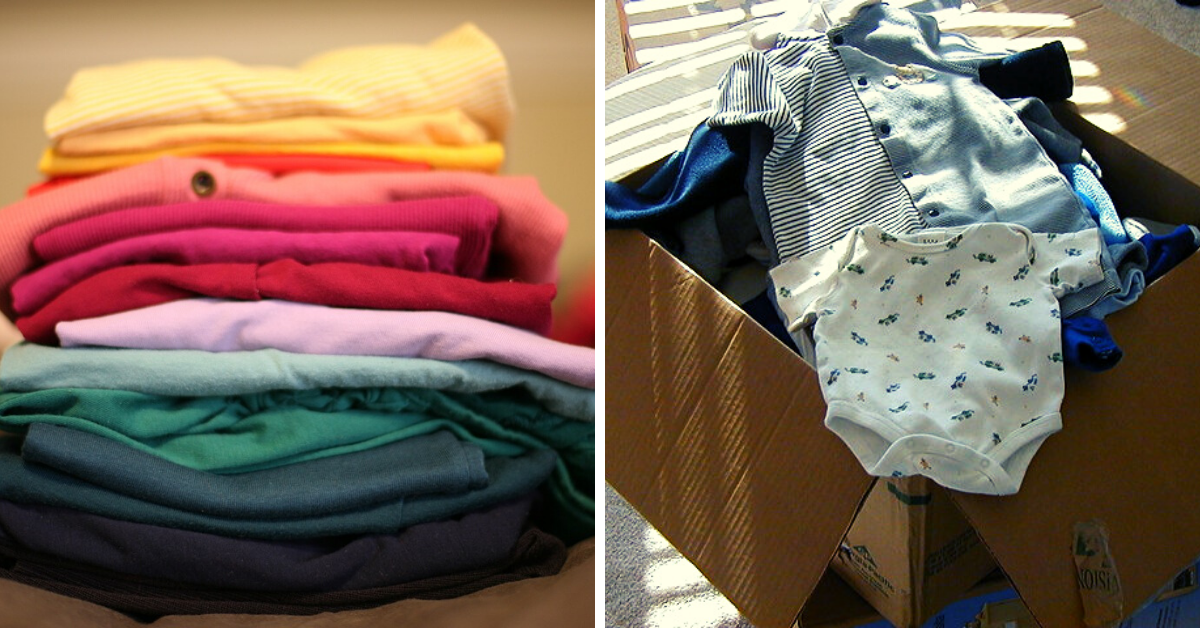Been shopping lately? Did you notice the large steel containers near the billing counter? If you have, then that’s good news. With sustainability gaining more importance by the day, fast fashion brands have finally decided to take up initiatives to recycle clothes. As part of their campaign, many of them have placed recycling bins in their outlets and are even offering 15-20 per cent off on the bill for donating clothes.

Although these initiatives are great, most often the clothes that cannot be recycled end up in landfills. So the next time you decide to donate your old clothes for recycling, here are some things you need to keep in mind.
Dry and Damp-free
Would you like to wear clothes that smell damp and musty? I don’t think so. Then why donate clothes that smell the same? Keep the clothes that you donate dry and free from any dampness to keep away the mildew odour. Twirl.store, an initiative created to upcycle clothes and empower women through employment ensures that the fabric they collect is upcycle-worthy. “If you have decided to donate your clothes for upcycling/recycling, you must follow through the entire process – run a quality-check at home itself before you decide to give it away,” says Sujatha Chatterjee, the founder.
Segregate and Wash
Although recycling is highly encouraged, the procedures that follow the collection are often overlooked. ‘Dwij’, a company completely based on upcycling, collects old jeans and turns them into denim bags. Soumya Annapurna Kalluri, the founder, wanted to create ‘wealth from waste’ while empowering the underprivileged through employment opportunities. “We follow 3 steps before we get into upcycling, namely – sorting, washing and customized cutting. Segregation, in particular, is very time-consuming,” says Sowmya.
Following these three steps before donating your clothes can make a huge difference and make the job a lot easier for recycling centres.
The Rest Of Them
The final and the most important thing to remember is that all clothes cannot be recycled. Many clothes that are made of mixed fabric, especially denim are very difficult to recycle.
The number of resources used to create denim jeans is also very high. A recent study showed that it requires 6,814 litres of water to produce cotton for just one pair of jeans. That’s a lot of water! So what do we do with our old jeans? If they are good enough but just needs a little bit of repair, take a weekend to fix them all, if that’s not the case and they are truly worn out, consider sending them to upcycling centres like Dwij.
Shop Less, Shop Sustainable
At the end of the day, the easiest way to reduce the textile waste you send to landfills is to just stop shopping when you know you don’t need new clothes. Yes. I know it seems harsh to read that, but it’s a paltry price to pay to patch up the planet. Although it can be quite a challenge, it is a great step to reduce the overall waste you produce in your house. If you find that impossible, shop from sustainable brands. This way you can promote zero-waste businesses while leading a sustainable lifestyle.
Also Read: Skip The Parlour: This 4-Step Curly Girl Method Is Easy, Natural and Low-Cost!
(Edited by Saiqua Sultan)
Like this story? Or have something to share? Write to us: contact@thebetterindia.com, or connect with us on Facebook and Twitter.
If you found our stories insightful, informative, or even just enjoyable, we invite you to consider making a voluntary payment to support the work we do at The Better India. Your contribution helps us continue producing quality content that educates, inspires, and drives positive change.
Choose one of the payment options below for your contribution-
By paying for the stories you value, you directly contribute to sustaining our efforts focused on making a difference in the world. Together, let's ensure that impactful stories continue to be told and shared, enriching lives and communities alike.
Thank you for your support. Here are some frequently asked questions you might find helpful to know why you are contributing?

